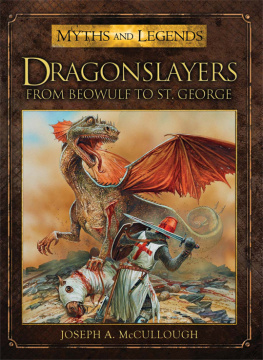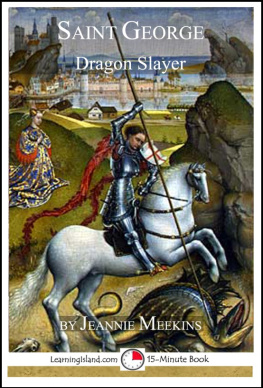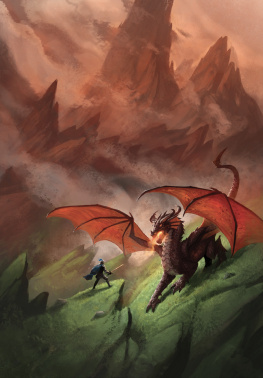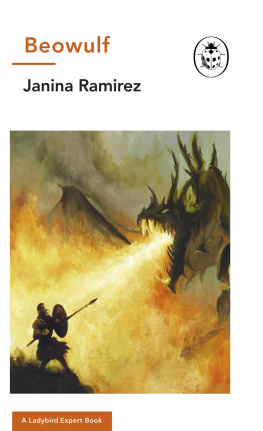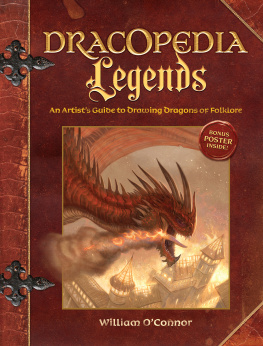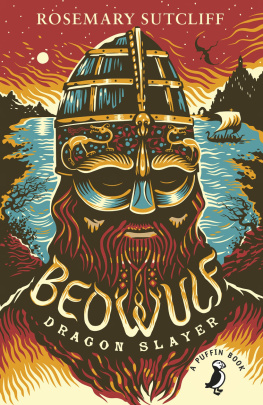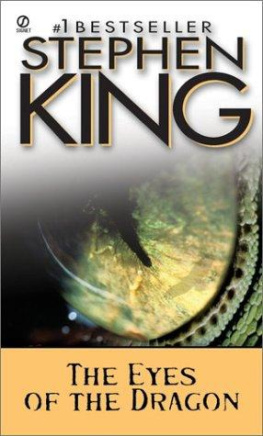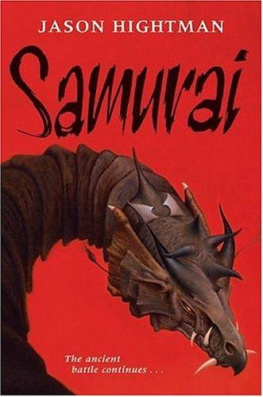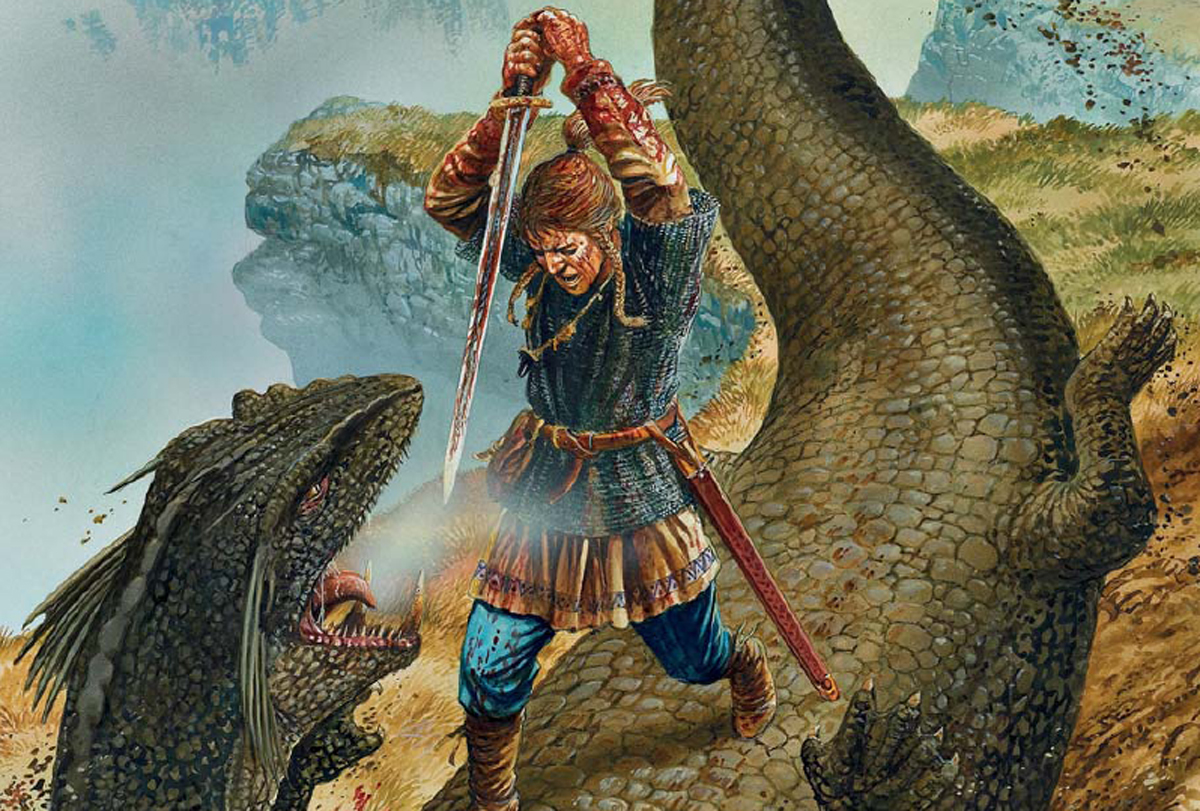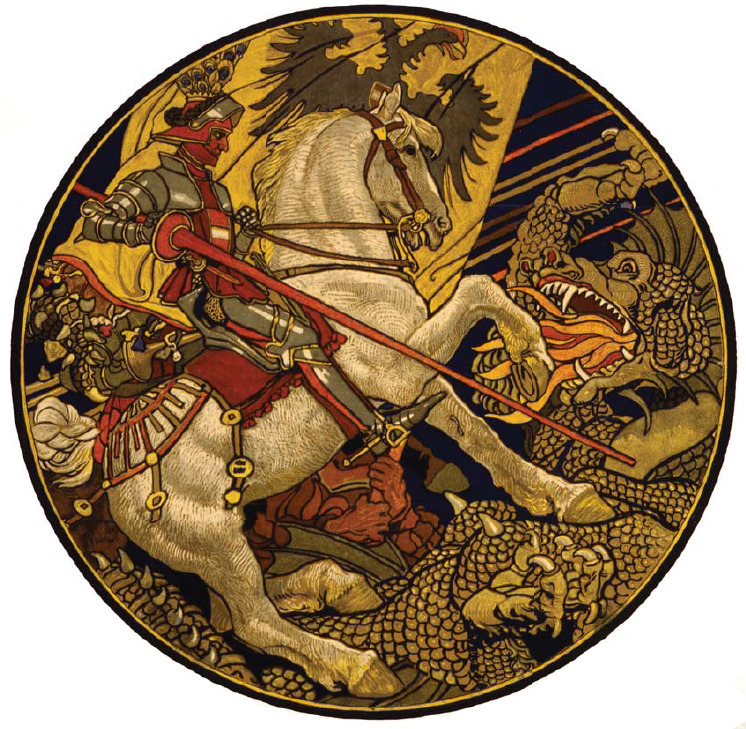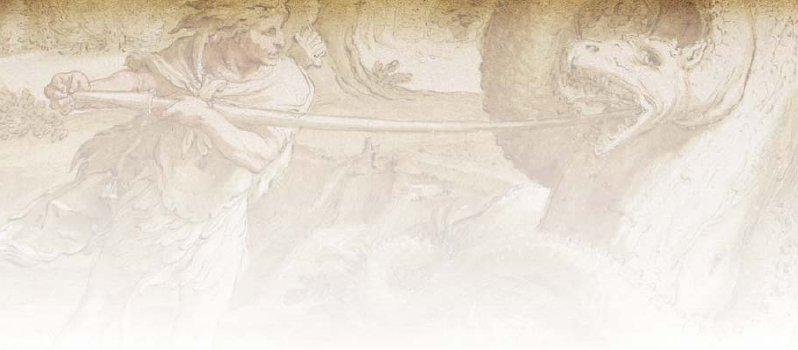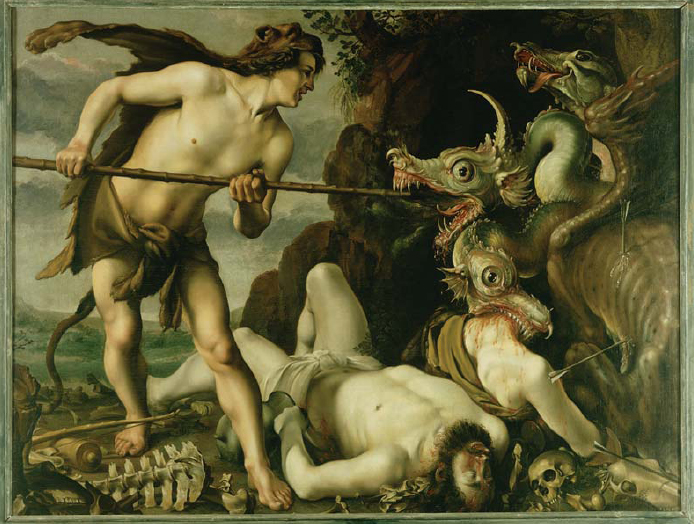DRAGONSLAYERS
FROM BEOWULF TO ST. GEORGE
AUTHOR: JOSEPH A. M C CULLOUGH
ILLUSTRATOR: PETER DENNIS
CONTENTS
I NTRODUCTION
This is a book of battles, of desperate fights between the greatest heroes of myth and legend and mankinds most ancient and dangerous foe, the dragons. These titanic serpents, with or without wings, or indeed, legs, have haunted the dreams of humanity since our earliest days. In our oldest myths, the gods themselves battled these monsters in an effort to bring order out of chaos, and light out of darkness. In Ancient Babylonian tales, the god Marduk fights against Tiamat, the dragon of chaos. According to the Ancient Greeks, the god Zeus struggled against Typhon, the Father of all Monsters, while the sun god Apollo slew the great dragon Python. This last tale is perhaps a reflection of the Ancient Egyptian story where the sun god Ra battles the god of chaos and darkness, Apep, usually depicted as a great serpent or dragon. According to the myths of the Ancient Norse, the struggle against the dragons will continue until the end of time, when Thor will slay Jrmungandr, the Midgard Serpent, as part of Ragnark, before dying himself from the effects of the serpents poison.
It is those great battles in the heavens that serve as the backdrop for the stories presented here. This is a book about heroes: men who, despite their mortality, faced off against the dragons and used their strength, skill, and cunning to overcome their enemies. Today, there are literally hundreds of myths, legends, and folktales about dragonslayers. Some of these come from historical, or semi-historical sources; others survive as mere fairytales. To collect them all would be the work of more than one lifetime.
Presented here are the most famous, important, interesting and entertaining stories about dragonslaying. Each tale is retold using modern language and modern storytelling sensibilities, but attempts to stay as true as possible to the original source material. Accompanying each tale is the essential information about the myth or legend: its sources, its historical basis, its development, and its continuing legacy in the modern world.
The story of the dragonslayer is usually considered a European one. It begins in the myths mentioned above and has its strongest roots in the Classical Greek and Ancient Norse stories. These were then filtered through the rise of Christianity, until stories of dragonslayers became part of the make-up of medieval European culture. Although there are dragonslaying stories from other parts of the world, and these will be touched upon in the last chapter of the book, the vast majority of stories, and the enduring legacy of the fight between men and dragons, comes from the European tradition.
Today, thanks in no small part to the writings of J.R.R. Tolkien and the early role-playing game, Dungeons & Dragons, dragonslayers have once again become a staple part of modern storytelling and appear in books, comics, and movies too numerous to mention. But there were times, in centuries past, when people truly believed in dragons, when deadly giant serpents with poison breath could lurk in any hole or cave. Those were the days of the great heroes. Those were the days of the dragonslayers.
A NCIENT D RAGONSLAYERS
Many of the early stories of men battling against dragons come from the heroic tales of mythic Greece. In fact, the word dragon derives from the Greek word drakon, meaning a creature with scales, usually a serpent or sea-monster. Unfortunately, this immediately leads to a problem. When the Ancient Greeks used the word drakon they were not always referring to a creature that modern readers would recognize as a dragon. They could have meant a simple snake or even a shark-like sea-creature. For example, the ancient hero Perseus is sometimes said to have used the head of Medusa to rescue the princess Andromeda from a dragon. However, this is a misreading of drakon, for the creature described is truly a sea-monster and has no specific dragon-like qualities beyond having scales.
Despite this confusion, the tales of Ancient Greece are full of dragons in the form of giant serpents, often possessing multiple heads and breathing poisonous fumes. Unlike later myths, where dragons seem to have become a true species, almost all of the Greek examples are unique creatures, the offspring of gods, Titans or other monsters. Also, unlike later dragons, these giant serpents are not specifically evil. They are dangerous and usually no friend of mankind, but they embody no specific malice.
While many of the ancient dragonslayer stories in Western culture come from Ancient Greece, there are a few tales of heroes taking on dragons or serpents in other cultures, most notably Celtic and Hebrew, though most of these encounters are just diversions from other adventures, or side-quests from the main story.
Presented below are three of the best known, and most fully elaborated, stories of ancient dragonslayers. Two, the tales of Cadmus and Hercules, come from Ancient Greece, while the third, Daniel of the Lions Den fame, can be found in the Old Testament of some bibles.
Cadmus, Founder of Thebes
Long before the fall of Troy, the ill-fated King Agenor, son of the sea-god Poseidon, sat on the Phoenician throne and ruled his people with wisdom and justice. The king had three sons, Cadmus, Phoenix, and Cilix and a daughter, Europa, and for many years they lived happily. However, as Europa grew to womanhood, her radiant beauty grew so nearly divine that Zeus himself came down from Olympus and bore her away. When King Agenor learned of his daughters disappearance, his grief overwhelmed him. In his madness, he commanded his three sons to go out and search for their sister and not to return unless they found her.
Cadmus slays the dragon by Hendrick Goltzius.
Despite his fathers unkind order, Prince Cadmus gathered together a group of companions and set off on this quest. For months he led his men through many adventures, through battles and hardships, but not one clue did they find concerning the missing Europa. In desperation, Cadmus took his men to Delphi in Greece, to consult with the famed Oracle of Apollo. There, where Apollo had slain the dragon, Python, the Oracle instructed Cadmus to abandon his quest, for he would never find his sister. Instead, he should go forth and follow the first animal he encountered until it laid down to rest. In that spot he should found a city.
Troubled by the failure of his quest, Cadmus left the Oracle and returned to his companions. Soon after, he spotted a lone cow, with the sign of the moon on one flank, and decided to follow the beast. For days, Cadmus trudged along after the heifer, which never stopped and never rested, until, finally, it settled down in Boeotia. The men rejoiced that they had reached the end of their travels, and Cadmus determined to make a sacrifice to the goddess Athena in thanks. Spying a nearby spring, Cadmus sent his companions off to fetch water, while he prepared the sacrifice.

